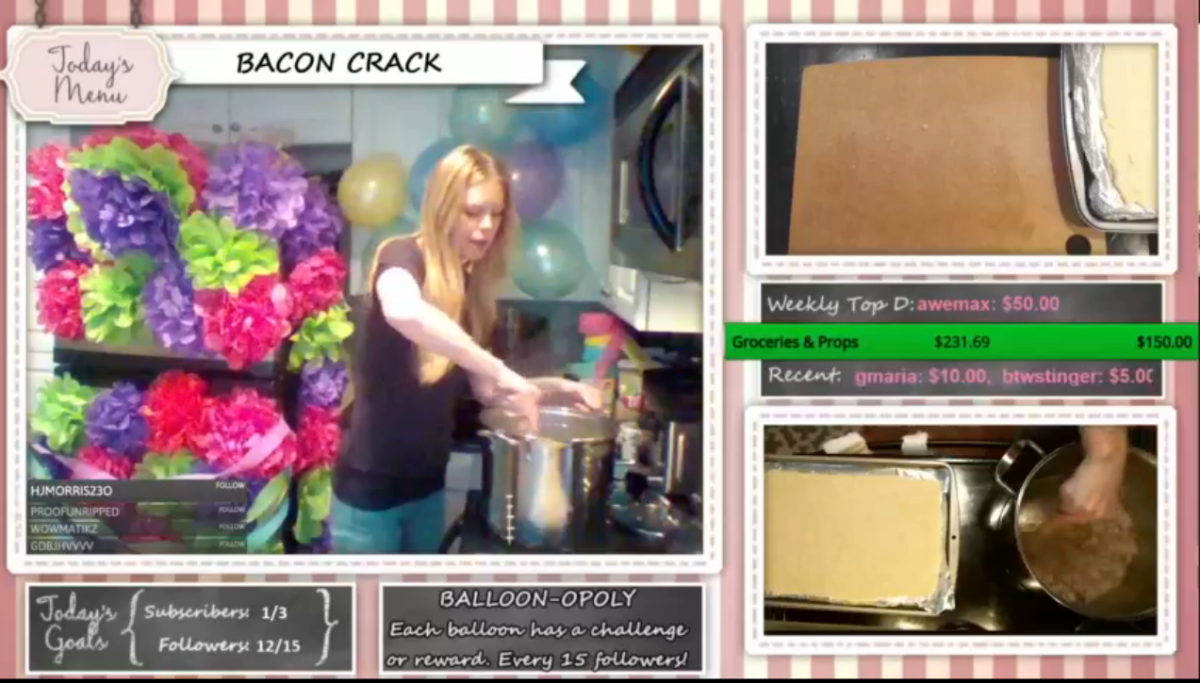Twitch premieres food channel, starting with Julia Child and making good on early goal
Cooking shows. News reports. Musical performances. Tips and tricks on sports and video games.
The mishmash of live programming was meant to attract millions of viewers to the website Justin.tv and turn the young online video service into an advertising machine.
A decade later and under a different name, that vision finally appears to be taking hold.
Twitch, the video game streaming service that grew out of Justin.tv, announced Tuesday that it would begin curating a growing supply of live video related to food into a new channel. The move to highlight low-budget cooking shows and home videos about elaborate dishes comes months after Twitch launched a Creative section, aiming to draw attention to live streams from graphic designers, musicians and other artists.
Demand is pouring in. Viewership of Creative channels has doubled since the section debuted in October, according to Twitch, with about 2,000 broadcasters streaming each day.
About 5.6 million people tuned in to a marathon of Bob Ross' "The Joy of Painting" show when Creative launched. The audience could be even bigger when Twitch Food, the new around-the-clock channel, kicks off Tuesday with a four-day marathon of all 201 episodes of Julia Child's "The French Chef."
Some streaming video creators, including aspiring cooking-show host Christine Ward, 29, of Laguna Hills, are so bullish that they, like many gamers before them, are quitting their day jobs to try living off online broadcasts.
Twitch's staple, which attracts 100 million viewers a month, remains its feeds of people playing video games. But the move to broaden its offerings shows how significantly timing and launch strategy can affect a start-ups's chance of success.
Twitch's initial results make a case for a start-up conquering a niche or two first rather than going mass market early on, as the company had in a previous incarnation with Justin.tv.
Justin.tv welcomed any type of nonsexual content, but the openness led to several problems. It lacked the resources to serve the varying needs of different categories of broadcasters, and commanding a loyal audience for such a wide array of content became difficult. The free-for-all also led to people streaming TV shows and other rights-protected content, which led to legal issues. And as YouTube was rising, it wasn't immediately clear to viewers or advertisers why live content was better than recorded content.
Timing played a role as well. Back when Justin.tv launched, the equipment needed to set up a video stream was not as prevalent as today. The lone bright spot was video gamers, who are often at the forefront of technology shifts.
In 2011, the Justin.tv team decided to focus on video gamers' desires by developing a new service, Twitch. Since then, smartphones and more affordable digital cameras have made it trivial to start a live stream. And advertisers are now eager to sponsor highly viewed live content online as cord-cutting diminishes TV's stature.
Amazon.com Inc. hasn't released details about Twitch's financial performance since buying the San Francisco company for about $1 billion in 2014. But last week Piper Jaffray analyst Gene Munster estimated Twitch could be worth $20 billion by 2020 -- adding as much as 8% to Amazon's value -- despite increasing competition on the gaming front from YouTube and start-ups including Kamcord, Azubu and Mobcrush. Twitch generates revenue through ads and subscription fees.
Bill Moorier, head of Twitch Creative, said he's talking to streamers across the Internet to reel them in. Growing to areas beyond gaming makes Twitch appealing to new demographic groups, including women, who can catch the attention of new advertisers, he noted.
"We start with the community and what the audience wants, and we know we will be able to monetize and give revenue back to the content creators eventually," he said.

Ward is among those testing that notion. Three weeks ago, she quit her job tutoring middle-schoolers in English and math. She now spends her days preparing for and producing five live streams each week on her CookingForNoobs channel, which about 8,000 users follow. She peppers her shows with singing and dancing routines and symbolically honors new subscribers with paper flowers in her kitchen.
Ward, who started on Twitch last July, will dig into savings over the next six months. All the while, she'll monitor whether she can survive on donations from viewers, a tiny amount of money from ads and an increasing flow of income from subscribers who can get perks like access to nonpublic streams for about $5 a month.
"It's really blown up since [Twitch] endorsed and embraced creative content in October," Ward said. "A lot of talented people came in, and it’s actually created a challenge competition-wise, but a fun challenge to see if I can climb up the ladder."
It's a long way from when a friend who'd been doing "Heroes of the Storm" gaming videos on Twitch recommended she pursue a cooking channel. He'd seen a few gamers dabble in it part-time on their own channels.
Many viewers initially reported Ward's show as inappropriate since it didn't touch on gaming, but Twitch offered a green light. A couple of viewers even gave her a combined donation of $747 soon after she started to upgrade her camera and laptop. Now, the occasional hater in the comments section is doused by a chorus of supporters.
On Tuesday, she plans to stream for eight hours as she makes bacon-basted chicken, slow-cooked beef with vegetables and a lobster dish. They're all recipes of Child, who graduated 65 years ago Tuesday from the famed Le Cordon Bleu cooking school in Paris.
Twitter: @peard33




